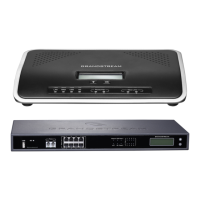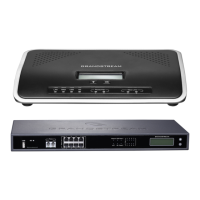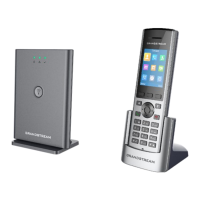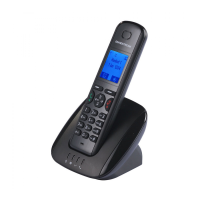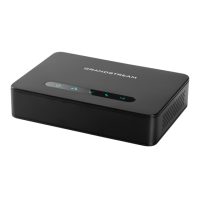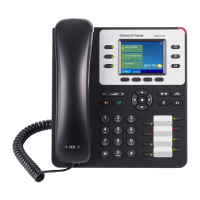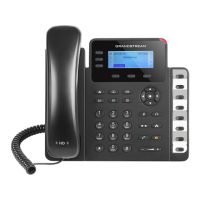Figure 225: Downloaded CDR File Sample - Source Channel and Dest Channel 1
DAHDI means it is an analog call, FXO or FXS.
For UCM6202, DAHDI/(1-2) are FXO ports, and DAHDI(3-4) are FXS ports.
For UCM6204, DAHDI/(1-4) are FXO ports, and DAHDI(5-6) are FXS ports.
For UCM6208, DAHDI/(1-8) are FXO ports, and DAHDI(9-10) are FXS ports.
Sample 2:
Figure 226: Downloaded CDR File Sample - Source Channel and Dest Channel 2
"SIP" means it's a SIP call. There are three possible format:
(a) PJSIP/NUM-XXXXXX, where NUM is the local SIP extension number. The last XXXXX is a random string
and can be ignored.
(c) PJSIP/trunk_X/NUM, where trunk_X is the internal trunk name, and NUM is the number to dial out through
the trunk.
(c) PJSIP/trunk_X-XXXXXX, where trunk_X is the internal trunk name and it is an inbound call from this trunk.
The last XXXXX is a random string and can be ignored.
There are some other possible values, but these values are almost the application name which are used by the
dialplan.
IAX2/NUM-XXXXXXX: it means this is an IAX call.
Local/@from-internal-XXXXX: it is used internally to do some special feature procedure. We can simply ignore
it.
Hangup: the call is hung up from the dialplan. This indicates there are some errors or it has run into abnormal
cases.
Playback: play some prompts to you, such as 183 response or run into an IVR.
ReadExten: collect numbers from user. It may occur when you input PIN codes or run into DISA
Statistics
CDR Statistics is an additional feature on the UCM6200 which provides users a visual overview of the call report
across the time frame. Users can filter with different criteria to generate the statistics chart.

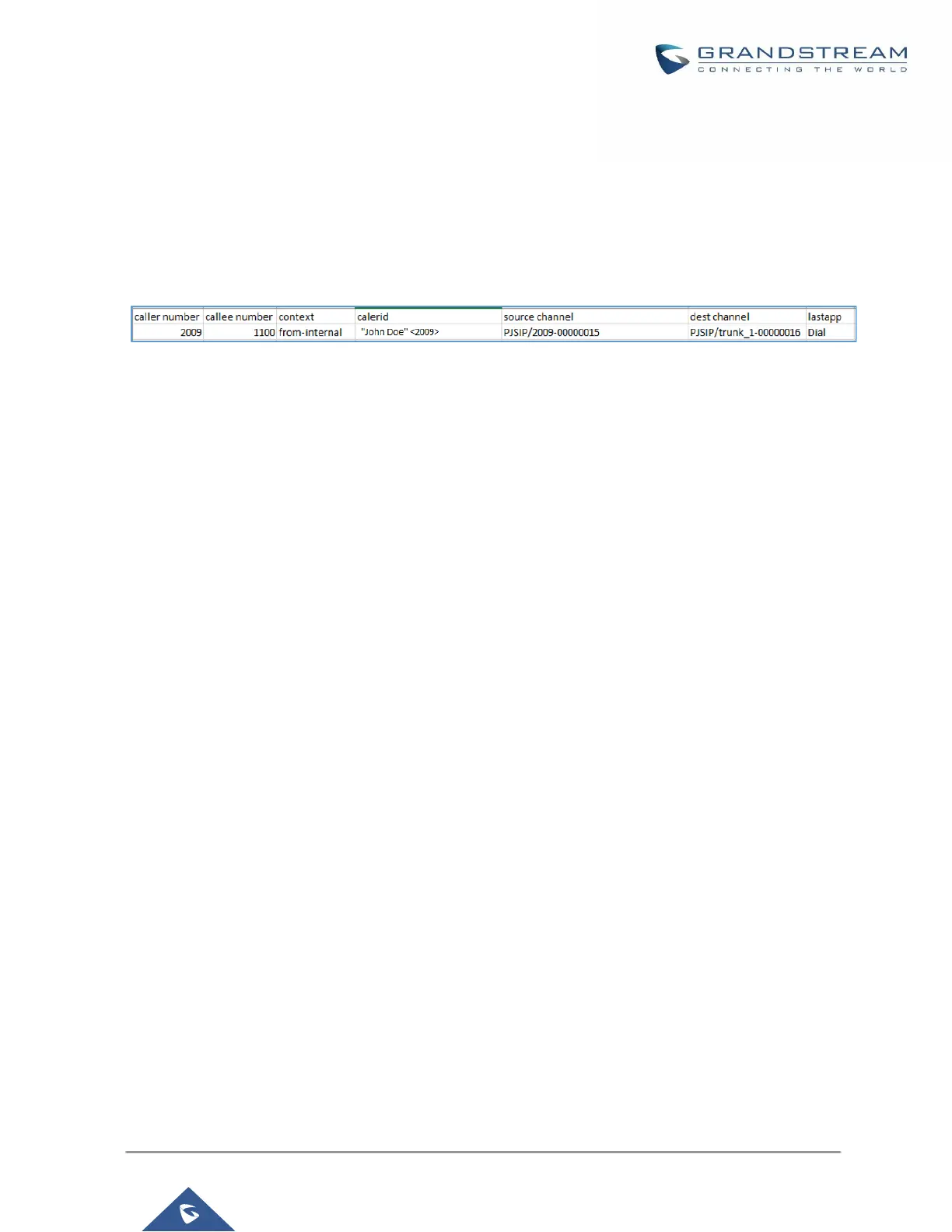